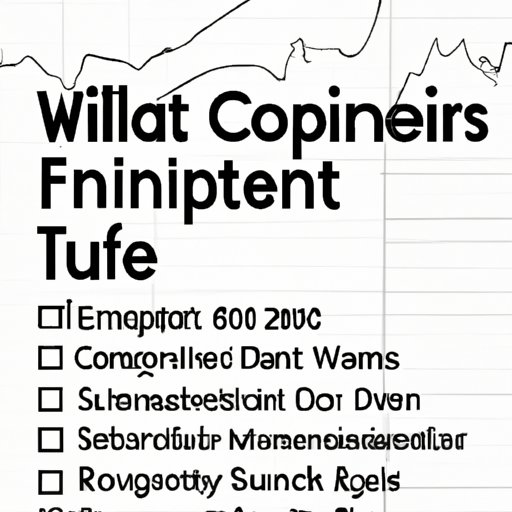Introduction
Investing in commodities is an excellent way to diversify your portfolio and potentially reap higher returns than stocks and bonds. But before you jump into commodities investing, it’s important to understand what commodities are, the basics of supply and demand, and the different types of investments available. This article will provide a comprehensive guide on how to invest in commodities.
Definition of Commodities
Commodities are basic goods used in commerce that are interchangeable with other goods of the same type. Examples of commodities include agricultural products like corn, wheat, coffee, cattle, and pork bellies; energy sources such as natural gas, crude oil, and coal; and metals such as gold, silver, platinum, and copper. These goods are traded on organized exchanges like the Chicago Mercantile Exchange (CME) or the London Metal Exchange (LME).
Overview of Investing in Commodities
Investing in commodities involves speculating on the future price of a particular commodity. This can be done through exchange-traded funds (ETFs), futures contracts, mutual funds, and index funds. The goal is to purchase a commodity at a low price and then sell it at a higher price when the market rises. By doing so, investors can make a profit from the difference between their purchase and sale prices.
Research the Commodities Market
Before investing in commodities, it’s important to do your research. You should learn about different types of commodities and understand the basics of supply and demand. Additionally, you should analyze economic indicators that could affect the price of commodities such as GDP growth, inflation, interest rates, and political events.
Compare Different Commodity Investments
When comparing different commodity investments, consider exchange-traded funds (ETFs), futures contracts, mutual funds, and index funds. ETFs allow investors to buy and sell baskets of commodities, while futures contracts involve taking a long or short position on a contract for a specific amount of a commodity at a set price. Mutual funds and index funds are collections of securities that track the performance of a particular commodity or market index.
Understand the Risks of Investing in Commodities
It’s important to understand the risks associated with investing in commodities. Volatility is one of the main risks, as prices can fluctuate dramatically due to supply and demand imbalances. Leverage is another risk, as investors may need to borrow money to purchase certain commodities. Additionally, there is a risk of market losses if the price of the commodity falls.

Choose a Brokerage Firm for Trading Commodities
When choosing a brokerage firm for trading commodities, it’s important to check credentials and licensing. Read reviews and testimonials from other investors, and compare fees and services. Consider the types of investments offered by the brokerage and whether they meet your needs.

Evaluate Your Financial Goals and Risk Tolerance
Before investing in commodities, it’s important to evaluate your financial goals and risk tolerance. Determine how much you can afford to lose and set reasonable expectations. Calculate your potential returns and decide if they are worth the risk. It’s also important to consider your time horizon and whether you have the patience to wait out volatile markets.
Monitor the Markets and Track Your Investments
Once you’ve invested in commodities, it’s important to monitor the markets and track your investments. Utilize online tools like charts and graphs to stay up-to-date on market movements. Keep records of your trades and rebalance your portfolio as needed.

Take Advantage of Professional Advice When Needed
If you’re new to commodities investing, it’s a good idea to consult a financial adviser. Seek out expert opinion from experienced traders, and consider a robo-adviser if you’re looking for automated investment advice. Ultimately, it’s important to remember that investing in commodities carries some risk, so talk to a professional to ensure you understand the potential rewards and risks.
Conclusion
Investing in commodities can be a great way to diversify your portfolio and potentially reap higher returns than stocks and bonds. However, it’s important to understand the basics of commodities investing and the various types of investments available. Additionally, it’s essential to monitor the markets and track your investments, take advantage of professional advice when needed, and evaluate your financial goals and risk tolerance. By following this comprehensive guide, you’ll be well on your way to successful commodities investing.
(Note: Is this article not meeting your expectations? Do you have knowledge or insights to share? Unlock new opportunities and expand your reach by joining our authors team. Click Registration to join us and share your expertise with our readers.)
